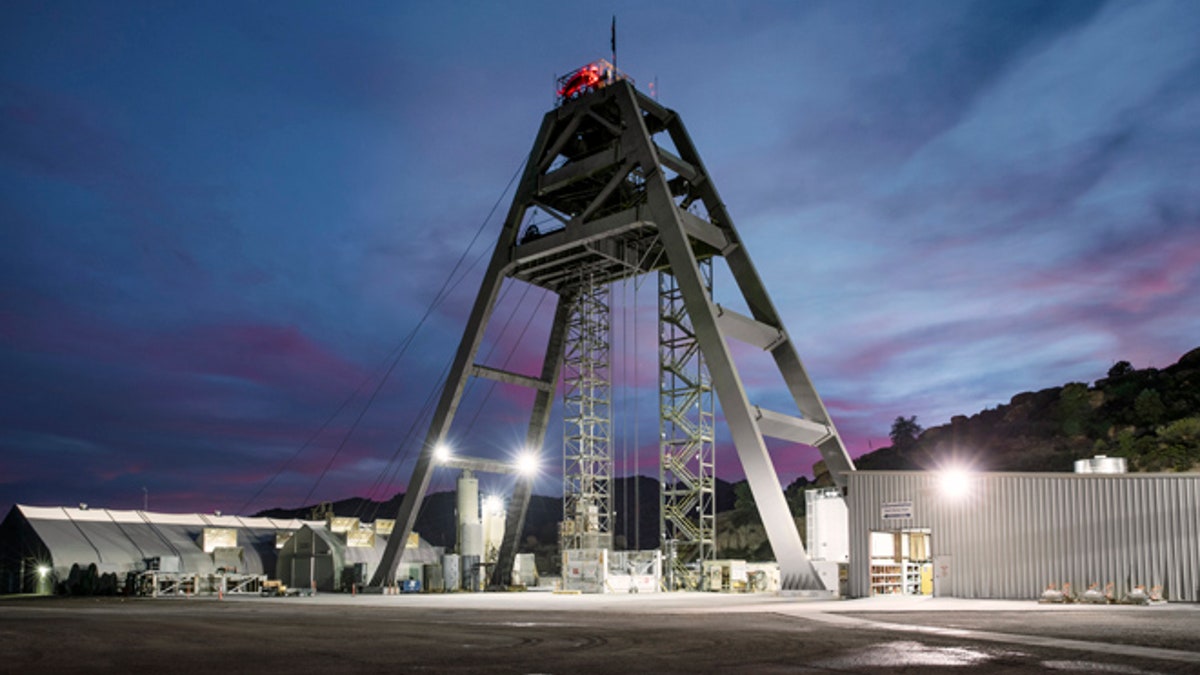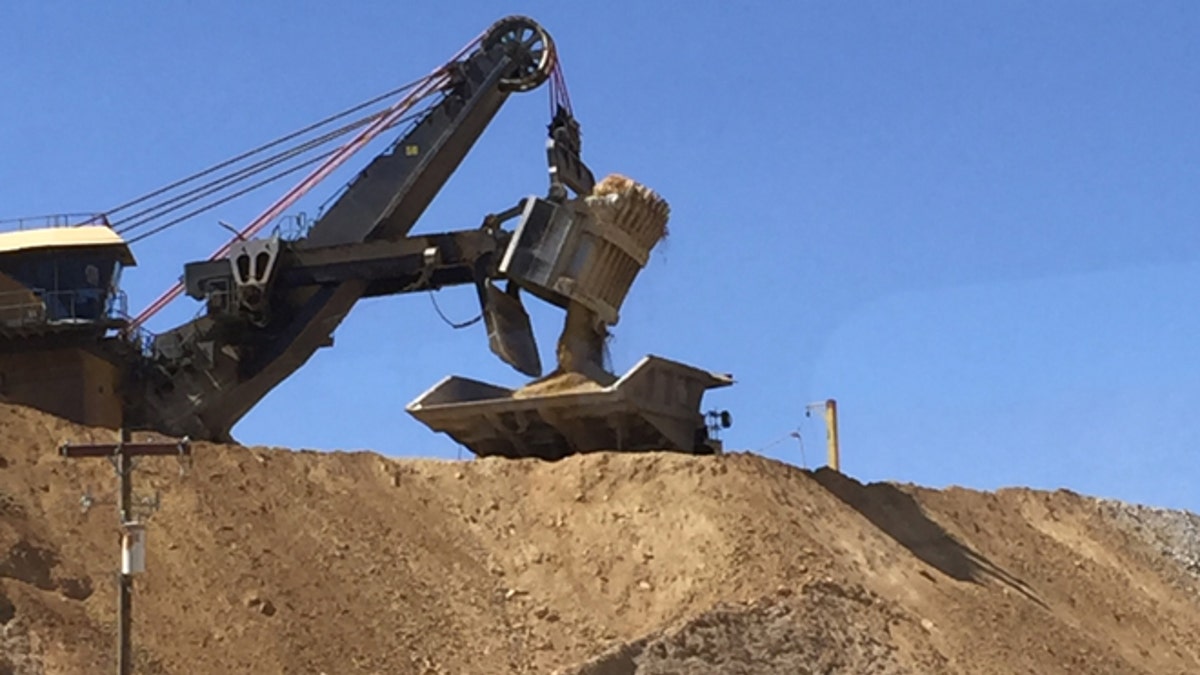
The No. 10 shaft at the Resolution Copper mine near Superior, Arizona. (Photo: Barbara Mannino/FoxNews.com) (Special to FoxNews.com)
Mining companies are fired up about a proposed federal rule change that would jack up the purse companies must have access to in order to cover any environmental damage their work might cause.
The proposed Environmental Protection Agency (EPA) changes shift the burden of financing Superfund cleanups -- which are also known as National Priority List, or NPL, sites -- away from the federal government to the mining facilities, a move that would cost the industry $171 million a year and save the EPA $527 million over 34 years, according to the agency’s Regulatory Impact Analysis.
Companies see an added burden as much as 20 times higher from the insurance and bonds they would be required to get, and believe the change will have a devastating impact on the economy of states like Nevada, which leads the U.S. in gold production, and other metal-mining states, most of them in the western half of the country.
The change to Section 108(b) of the EPA’s Comprehensive Environmental Response Compensation and Liability Act (CERCLA) is meant to “increase the likelihood that those owners and operators will have funds necessary to address the CERCLA liabilities at their facilities, thus preventing the burden of cleanup from falling to other parties, including the American taxpayer.”
But at what cost?
One Nevada gold mining company reports that its bonding requirement could skyrocket from $20.4 million to $495.8 million. And an Arizona copper mine will be on the hook for an extra $715 million, despite getting some relief the new rule allows for safe mining practices.

(Special to FoxNews.com)
Hardrock mining executives told FoxNews.com they are fearful that companies will end up with excessive debt that could slow growth, chill investment in the industry and increase U.S. reliance on foreign mineral sources, said Debra Struhsacker, an environmental compliance and government affairs consultant.
“There’s a question about motivation for surety companies and banks to issue [financial instruments] to support the increased capacity,” Laura Skaer, executive director of the American Exploration and Mining Association (AEMA), told FoxNews.com.
CERCLA was put on the books in the 1980s as a statute that would identify industry sectors that posed the highest risk to public health and the environment, according to Tawny Bridgeford, the deputy general counsel at the National Mining Association (NMA).
The statute went 30 years without rules on the books. During that time, mining regulatory programs established written financial assurance responsibility rules through state agencies, as well as the Bureau of Land Management (BLM) and the U.S. Forest Service (USFS).
Those agencies provide almost $2.66 billion of financial assurance for hardrock mines in Nevada, Struhsacker said. Another $3.2 billion comes from BLM for mines on federal public lands in the western U.S.
Understandably, there are concerns that a number of sites will end up being doubly bonded.
What’s more, critics charge the EPA formula is based on several mining sites that made the national priority list (NPL) and conducted business prior to the passage of current mining laws, and before technological improvements in the industry were introduced.
“The states have approved more than 3,300 mining plans since 1990, and zero [of them] caused a Superfund problem nor were identified as a CERCLA NPL site,” said Skaer.
According to the EPA, the rule change represents the agency’s fulfillment of a January 2016 court order and a congressional directive that emerged from a 2014 lawsuit initiated by environmental NGOs.
But the timing of its implementation is questionable in two ways.
Mining companies are unhappy about the short timeframe between January 2016, when the D.C. District Court issued its order, and Dec. 1 -- when the EPA published the proposed rule.
“I’ve seen bills a fraction of this size and a whole lot less complicated be subjected to a 100-day review period or longer,” the NMA’s Bridgeford said.
Also, the change comes during Barack Obama’s time as a lame-duck president. The culture of the EPA will presumably shift dramatically if Oklahoma Attorney General Scott Pruitt, known as an opponent of excessive environmental regulation, replaces McCarthy.
Bridgeford also pointed out to FoxNews.com that “Western governors were outraged by the lack of consultation with [mining] states.” This week, the Western Governors’ Association issued a statement demanding the EPA consult with them and state regulators regarding the new requirements.
According to Elizabeth Horowitz, a spokeswoman for the Small Business Administration, the EPA failed to provide key data during the process.
Bridgeford said the EPA refused NMA’s request to perform an analysis of existing programs and also denied the association’s request to perform site-specific evaluations – which people in the mining industry believe are crucial to determining realistic financial requirements.
There’s hope that under the new administration, the EPA will take a fresh look at this rule, Bridgeford said.

